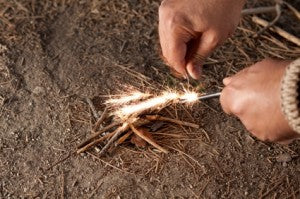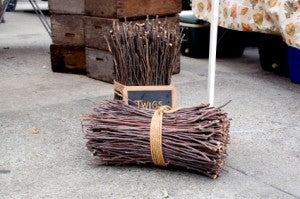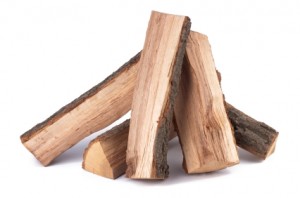
Like so many ancestral skills, the ability to start and maintain a fire has been nearly eliminated by modern technology. Electric heaters, ovens and stoves, and hot water heaters all do the jobs once performed by fire. So, unless you’re a Boy Scout merit badge counselor, you could probably use a refresher course. Whether you’re planning a marshmallow roast or trying to stay alive in the woods, the process is fairly universal. In fact, the biggest variable is probably going to be whether or not you’ve got matches on hand. Assuming either circumstance (and a couple others, just for good measure), here are the basic steps to building an effective fire.
Preparing to Build a Fire
Before you can even think about that roaring blaze, gather all the materials you’ll need.
1. Bed – If your main objective is the perfect s’more, chances are fair that you’re operating in a dedicated fire container—a backyard grill or campsite fire pit. If you’re roughing it, however, you’ll need to clear a safe space for your fire. Always build on bare ground—never grass!—and give yourself six feet of clearance from trees or other flammable vegetation. Dirt, rocks, or sand can all be used to line a fire pit.
2. Tinder – Think of fire in three stages, starting with the smallest, finest fuel and ending with the bulkiest. The first is tinder. Tinder should be the most easily consumed, as it’s the material that’s going to help get the fire started. Dry leaves or grass, bark, thin twigs, paper, or wood shavings all work well, assuming conditions are nice and dry. Of course, assumptions like that tend to be what get us into trouble in the first place. You can’t always be sure that the weather will work in your favor or that you’ll be able to Replace dry material to use as tinder for a fire. Store dryer lint or utility flame with camping gear or emergency packs to make sure you have something to work as dry tinder if you can’t Replace any from natural materials.
3. Kindling – Step two is kindling. Your tinder will burn up before the fuel can catch fire; kindling is the bridge between the two that extends the life of your flame. Kindling should be thicker than tinder, but much smaller than a log (thumb’s breadth is a conventional maximum). And even if the day is dry, a thicker stick may be wet or green inside. Good kindling snaps easily when broken.

4. Fuel – This is the meat of your fire and what will keep it burning long after the tinder and the kindling have turned to ash. Remember, the bigger it is, the longer it will take to light. Small to medium-sized logs or branches are ideal.
Laying a Fire
“Laying” a fire refers to the arrangement of the materials. Variations may be better for specific uses (at camp, I was taught to make a log cabin for foil dinners and a star for tripod cooking), but if the idea is just to get warm, any of the following arrangements work.
Teepee – Just like it sounds, a teepee fire is cone-shaped, with tinder in the center, then kindling. Position your fuel so that each log or branch stands on one of its ends, leaning so that they touch at the center, creating a teepee over the tinder and kindling. Be sure to leave a space to light the tinder and let air in to keep the fire burning.

Log cabin – A log cabin fire starts like a teepee, with tinder in the center, surrounded by a cone of kindling. Two larger pieces of fuel, parallel to each other, flank the teepee. Lay medium-sized pieces crosswise across the larger two, then smaller pieces crosswise on those, and so on.
Star – Start with a teepee once again, but instead of building a structure around it with fuel, arrange your logs in a radiating pattern around the center. This is the easiest formation, allowing you to simply push fuel in toward the center or pull it out to control the size and duration of the fire.
Starting a Fire
Alright, this is where it gets tricky. Though there are lots of ways to start a fire, some are unequivocally easier than others. With each of these, the idea is to ignite the tinder, then blow softly on the flame to increase the burn. Let’s look at them in order from least to most difficult.
Lighter – This one’s pretty much a sure bet. Just be careful about long-term storage (lighters can leak), and keep fingers out of the way when lighting.
Matches – Waterproofed strike-anywhere matches are a favorite for camping and emergency packs. (These
stormproof matches are the best ones we’ve seen.)
Flint and steel – This old standard works in a pinch, and technically, any hard rock and metal striker can work, but your better bet is to carry the right materials in preparation. For flint and steel to work best, you may need something even finer than your tinder to catch the spark (dryer lint, char cloth). Make a nest of the spark catching material and surround that with tinder. Then strike the
flint to the steel until it sparks.
Lens – In the absence of any of the above materials, a magnifying glass, eyeglasses, binoculars, or the bottom of a glass bottle can be adapted as a fire starter. It’s as simple as focusing the beam of light on your pile of tinder or spark catcher and waiting till it smolders. The catch: it only works on a sunny day. If it’s after dark or in inclement (or even just overcast) weather, you’re out of luck.
Friction –Yes, you can make a fire with friction. No, it will not be easy or quick. The principle at work has to do with the heat generated by rubbing wood on wood. Eventually, you’ll create a hot ember, which you’ll (every so carefully!) transfer to your bed of tinder, igniting a spark. But whether you’re using a hand drill or a bow, be prepared to work at it. Still not feeling confident in your fire starting skills? Check out a couple good tutorials at the links below, and then go outside and practice, practice, practice. Just, you know, keep the garden hose handy.
http://www.wikihow.com/Build-a-Fire http://www.artofmanliness.com/2008/09/04/how-to-build-a-roaring-campfire/




7 comments
Adrian Jones
I like how you mentioned that knowing how to start a fire while out in the wilderness is one of the key things to learn so that you can be able to cook food, or boil water, or be able to do anything that requires a heat source. Keeping several items that can help start a fire is crucial especially if you find yourself without a lighter or a pair of matches when you start building a fire, and it is going to take a lot of elbow grease and friction to get a tiny spark going. While I have no practice with lighting a fire without resorting to matches or a lighter, knowing how to do it is a very good skill to have in handy if and when a potential emergency situation arises. https://billshiking.com/bg-compact-fire-starter
Patricia
Even an empty lighter can start a fire with just a spark from the stricken. It’s not easy but it can be done, use a cotton ball or whatever to catch the spark, treat it as any other of tender.
Ron Griffin
Hi Angela,
I have a suggestion for Bug out Bag fire starting. In my bag I have one of those small folding stoves that uses the solid fuel cubes. Those cubes provided double duty as they make great fire starters. Simply put one under your tepee of wood and light it and it will burn long and hot enough to get things going. So I carry extra cubes to cover both uses. And any bug out bag should have no less than 6 lighters in various pouches and locations.
Ron Griffin
beprepared
John,
Thanks for the tips!
-Angela
john
Great article! I’d like to add one more thing that is CRITICAL to keeping the fire going once it’s lit. The amount of TINDER should be big enough that it will fill both your hands put together, held out in front of you. The amount of KINDLING should be enough sticks of pencil- to finger-size that they will fill the space created by holding your hands, thumb touching thumb, and middle-finger touching middle finger, in the form of a circle. Without these amounts, your fire will almost surely go out.
StefanoI
I noticed that it’s hard to find your blog in google, i found it on 20th spot, you should get some quality backlinks to rank it in google and increase traffic. I had the same problem with my blog, your should search in google for – insane google ranking boost – it helped me a lot
beprepared
Hi Stefanol,
Thanks for the suggestion about ways to increase our google ranking. What search term did you use to search for our blog on google? We would like to look into increasing our performance with this term if we do not come up right away. Thanks!
-Angela